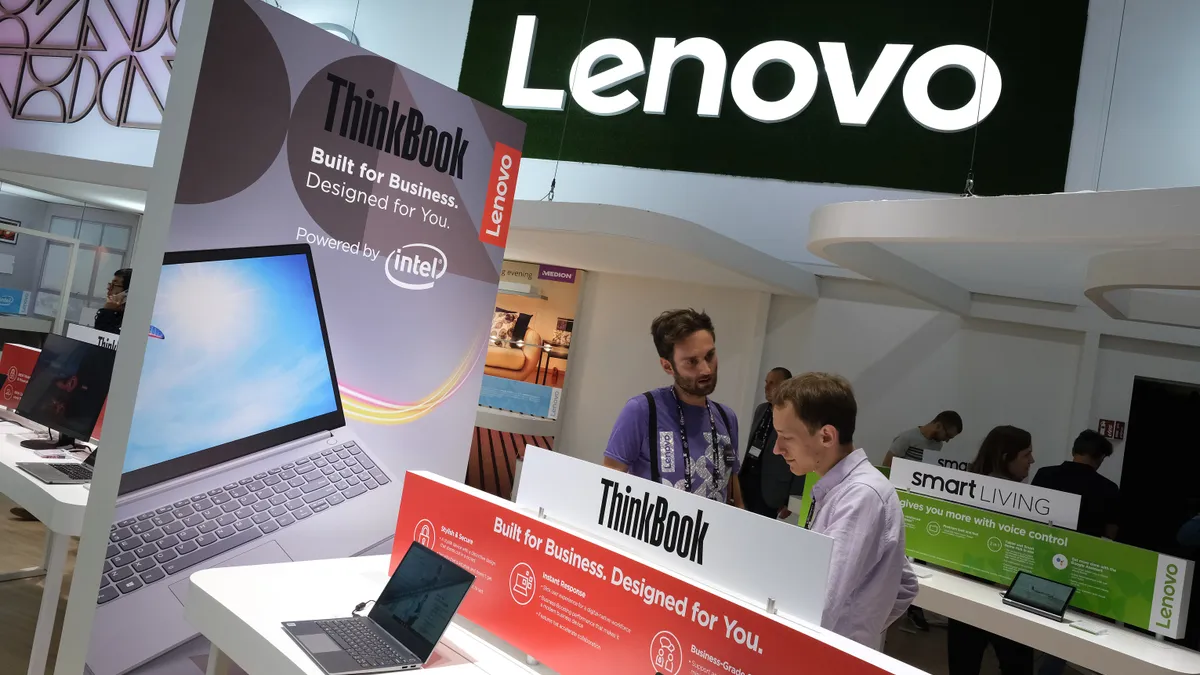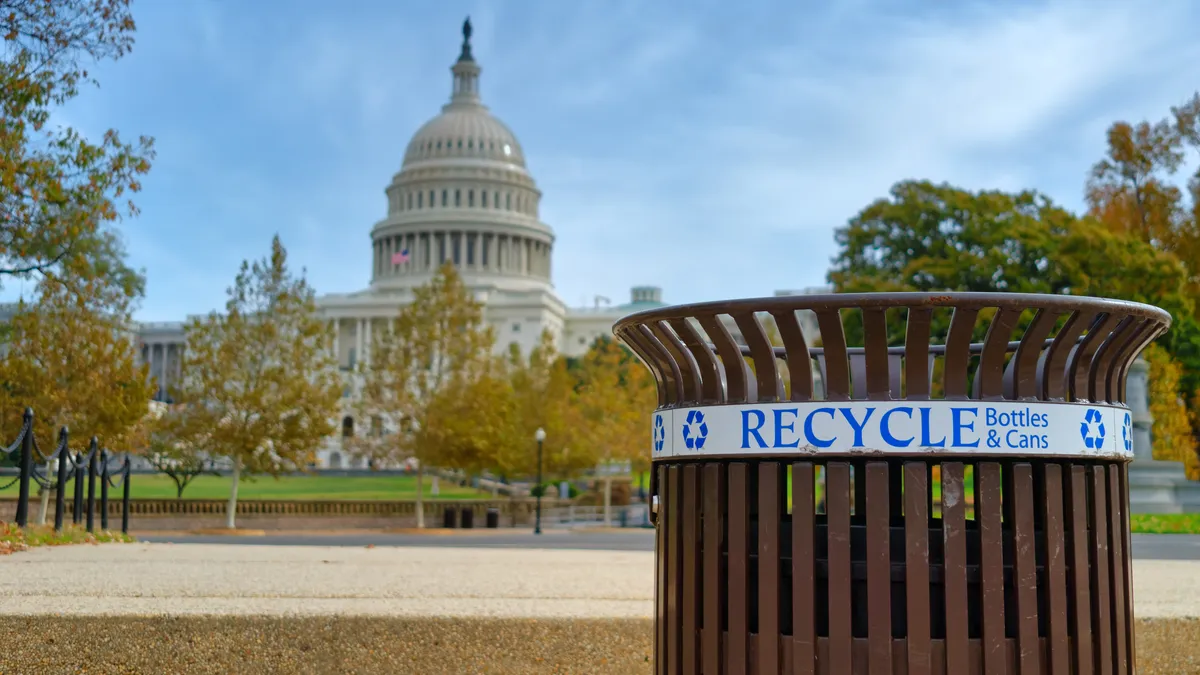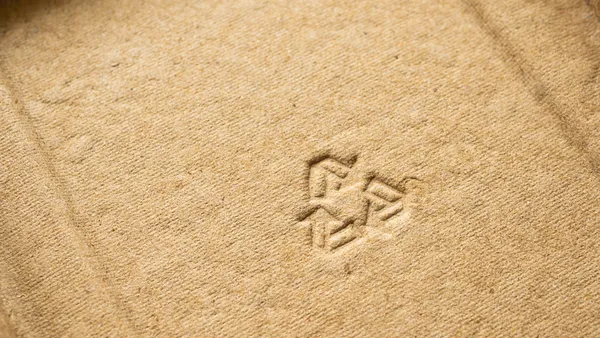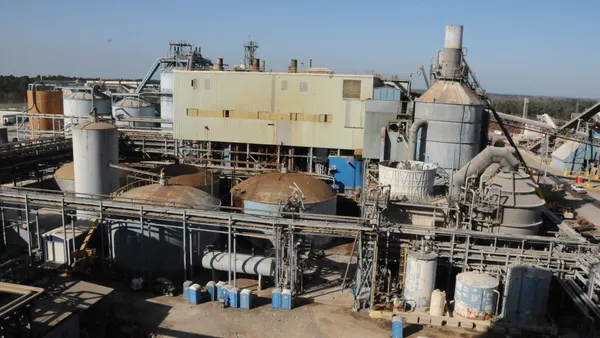Subbing in bamboo material for plastics is one of the key ways consumer electronics company Lenovo is working to make its product packaging more sustainable, according to the company’s newly released ESG report.
Lenovo has identified that packaging is a significant environmental issue for its operations and created four priority focal areas to reduce packaging consumption and waste, according to the report, which covers the company’s fiscal year from April 1, 2023 to March 31, 2024. The priorities are to increase the use of recycled and renewable materials, increase the use of bio-based materials, reduce packaging size and expand the use of bulk and reusable packaging.
The company is increasing the amount of bamboo and sugar cane fibers it incorporates into certain product packaging as a key way to meet those goals. This material change “marked the launch of a new era of packaging offerings for the company, while also enhancing customer experience,” the report says. It adds that bamboo fibers are renewable, lightweight and offer a “sleek and robust design.” Lenovo’s website also explains that bamboo can be compostable, is one of the world’s fastest-growing plants and creates “no toxic waste in the manufacturing process.”
Lenovo began using bamboo fibers in packaging in 2012, and in 2022 it introduced a new bamboo gift box for ThinkPad X1 and Z series laptops. The box weight is 30% lighter than the previous version, the report says. In 2023, the company expanded the bamboo fiber packaging to all ThinkPad series products, except the E series.
The report cites Lenovo’s emphasis on innovation as key to improving packaging sustainability. It considers packaging not just a product protector, but also “an opportunity for the innovative packaging engineers and designers to consider innovations that could help reduce the environmental impact of packaging and logistics.”
The amount of packaging material the company uses for its finished products has dropped. During FY 2024, Lenovo used 80,154 metric tons of packaging, which is down from 99,978 in FY 2023 and 119,621 in 2022.
The company says it is “on track” to meet its FY 2026 goal of making 60% of smartphone packaging from recycled materials. Similarly, it’s reportedly “on track” to use 50% less single-use plastic for smartphone packaging and reduce that packaging size and volume by 10% in the same timeframe. And it aims for 90% of PC products’ plastic packaging to be made from recycled materials by FY 2026, a goal for which it is also reportedly “on track.”
In FY 2023, Lenovo achieved plastic-free primary packaging on ThinkPad X1 and Z series laptops. The plastic-free primary packaging expanded to all ThinkPad series, except the E series, and select smartphones in FY 2024. This change eliminated 548 metric tons of plastic in packaging, the report says.
The packaging team began investigating the use of ocean-bound plastics in product packaging starting in 2019. Testing showed the best performance came from a mix of 30% OBP and 70% other recycled plastic, and the company launched its first packaging cushion containing OBP in this ratio for ThinkPad L14 packaging.
During FY 2024, Lenovo expanded the use of OBP with thermoformed cushions or system bags for select desktop, consumer notebook and server products, which it estimates will use 165 metric tons of OBP each year.
Lenovo requires its corrugated packaging to contain at least 70% postconsumer recycled fiber. It also mandates that suppliers “use the maximum available [PCR] where adequate supplies exist without compromising required packaging performance characteristics,” and that box printing is done via flexography with water-based, non-toxic inks that are compliant with the European Union’s Restriction of Hazardous Substances Directive, the report says. When virgin fibers are used for computer product liners, the company requires that they’re Forest Stewardship Council certified.











